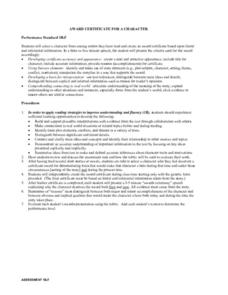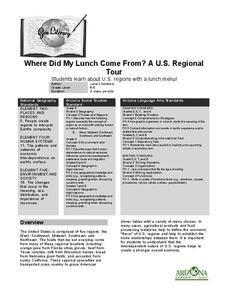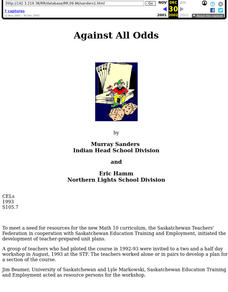Curated OER
Mapping the Brain
A virtual 3-D tour leads students to developing icons representing the function of various parts of the brain. These icons are then used to label hand-drawn maps of the brain. A worksheet, assessment, and detailed procedures are included.
Curated OER
AWARD CERTIFICATE FOR A CHARACTER
Connect to real-world experiences by having your primary learners create an award certificate based upon literal and inferential information from a story. They present the award to a character from a story and explain the criteria used....
Curated OER
Creating Classroom Rules
Why do we even have rules? Youngsters need to fully understand the answer to this question in order to be on their best behavior. First they examine how they help people get along in a group and keep people safe. They create personal...
Curated OER
Reading Fiction - Character
The goal of this lesson is to have learners understand how character is created through a combination of what they say and do, and what others say about them. In pairs, learners construct a short dialogue between a parent and child after...
Curated OER
Book It to Pizza Hut
Students participate in reading a story and writing a book report on the computer. They engage in computer skills such as, saving and printing their reports. They read their reports to the teacher and class.
Curated OER
Storytellers: Bruce Springsteen
Young scholars use the music of Bruce Springsteen to learn literature techniques.
Curated OER
Promoting Tolerance
Students create multimedia presentations on stereotyping. In this stereotyping lesson plan, students have discussions on different kinds of stereotyping, how it makes people feel, and create a multimedia presentation on it.
Curated OER
Cells in the Making
Young scholars examine and research the parts of a cell, their functions, and life processes. They simulate how cells receive nutrients using coffee filters, water, and coffee, and construct cells using pudding, cookie dough, and candy.
Curated OER
The Making of an Organ
Students examine and research how cells make up our organs. They create a model of a tongue showing cells, tissues and the organ.
Curated OER
A Taste of Blackberries
Fourth graders participate in a shared reading of Doris Buchanan's, A Taste of Blackberries. They read about grief in the loss of a best friend and examine the skills of a responsible family member.
Curated OER
Friendly Patter Poetry
Students create a free from poem on the topic of friendship. They read examples of free form poetry to gather ideas. Through the use of a graphic organizer, students generate a list of friendship characteristics which is used to create...
Curated OER
A Journey Through The Seasons
Second graders demonstrate creative movement, singing in canon or rounds, and playing instruments while taking "a musical journey through the seasons" in this second grade General Music lesson. Songs and discussion questions are...
Curated OER
Where Did My Lunch Come From? A U.S. Regional Tour
Students explore the regions from which their food comes. In this social studies lesson, students identify the different agricultural products that are found in the major regions of the United States. Students create a lunch menu.
Curated OER
Islamic Art
Students examine the various forms of Islamic Art. Using the art, they identify the basic elements and research its history and style of calligraphy. They create a piece of art based on information they collected and demonstrate...
Curated OER
Against all Odds
Tenth graders appreciate the role of probability in understanding everyday situations. They Communicate a summary of financial projections in appropriate reports, tables, and graphs after creating a new game of chance.
Other popular searches
- Elementary Implicit
- Implicit Differentiation
- Implicit and Explicit Meaning
- Implicit Questioning
- Teaching Inference Implicit
- Implicit Explicit
- Implicit Main Idea
- Implicit and Explicit Facts
- Implicit Differentation
- Implicit and Explicit
- Implicit Functions
- Implicit Ideas














